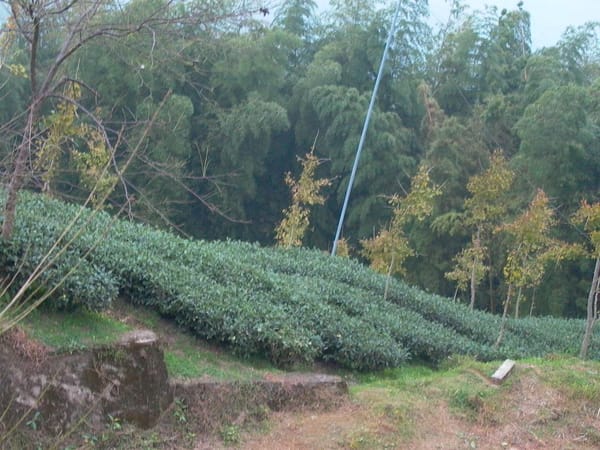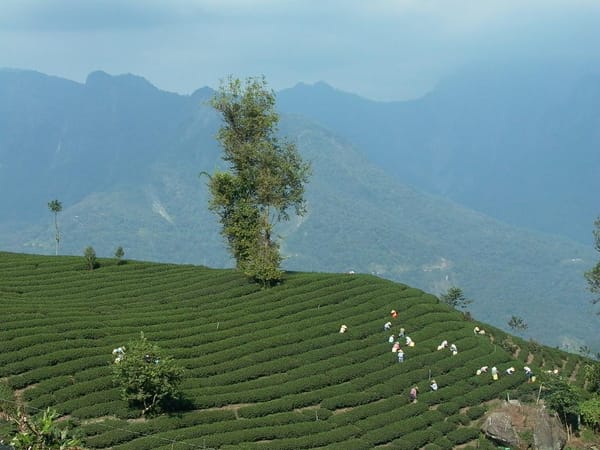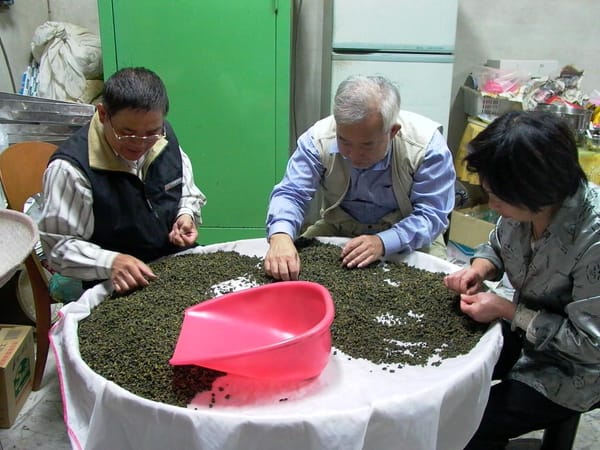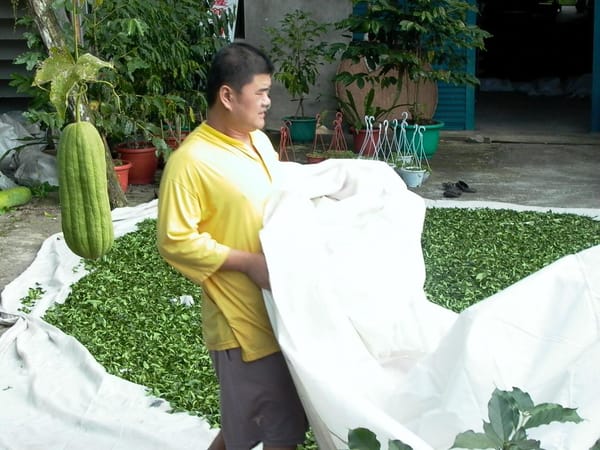As Taiwanese-style tea gained popularity in Mainland China, an unexpected phenomenon began unfolding in Fujian: the traditional craft of Tieguanyin started “borrowing” from Taiwan’s light fermentation methods. In Anxi—the birthplace of Tieguanyin—tea farmers now face a dilemma: should they preserve the traditional “Guanyin yun” (the signature rhyme of Tieguanyin), or adjust their craft to cater to the rising preference for Taiwanese-style teas? What market logic and business considerations lie behind this transformation?
At Anxi’s Ba Ma Tea Factory, a striking change is underway. Their small-packaged Tieguanyin, in terms of leaf shape and aroma, has become nearly indistinguishable from Taiwan’s high-mountain Oolong teas—“only the Guanyin rhyme reveals the difference.” This subtle evolution not only reflects the consumer craze for Taiwanese-style teas but also illustrates Fujian’s deeper adjustments to align with market preferences.
Next, we will explore how Fujian tea regions learn from Taiwan’s techniques, analyze the market drivers behind these adjustments, and examine the challenge of preserving traditional identity amid innovation.
Ba Ma Tea Factory’s Craft Innovation
Ba Ma’s case is emblematic of Fujian’s broader craft shift. Situated in Tieguanyin’s homeland, the factory stepped outside tradition to experiment with Taiwan-inspired light fermentation. Their small-packaged Tieguanyin products significantly altered production while keeping the essence of the cultivar intact.
The most noticeable adjustments appear in appearance and aroma. Traditional Tieguanyin emphasizes deeper fermentation and the distinct Guanyin yun. In contrast, the new products lean toward the floral, refreshing style of Taiwan’s high-mountain Oolongs. From rolling techniques to aromatic expression, traces of Taiwanese craftsmanship are evident.
Yet Ba Ma is not blindly imitating. While adopting light fermentation characteristics, they still preserve Tieguanyin’s signature rhyme. This delicate balance both satisfies consumer demand for Taiwanese-style teas and safeguards Tieguanyin’s unique identity—showcasing Fujian’s adaptive innovation.
Market-Driven Shifts
The fundamental driver behind Fujian’s adjustments is market demand. Taiwanese-style teas, with their light-fermentation, floral aroma, achieved sweeping success in China, creating pressure for traditional regions. Holding strictly to tradition risked losing market share.
This pressure prompted Fujian producers to rethink strategies. Flexibility in craft became key to survival. Anxi producers studied Taiwanese methods to adjust flavor presentation while retaining cultivar essence, responding directly to consumer preference.
The enthusiastic market response validated these changes. Not only did adjusted Tieguanyin win acceptance domestically, but it also carved out differentiation against Taiwanese imports, giving Fujian producers leverage in emerging markets.
Cross-Regional Transmission of Light Fermentation
The application of Taiwan’s light fermentation in Fujian highlights cross-regional knowledge transfer. This isn’t mere copying but adaptive innovation based on local cultivars and consumer demand.
Challenges arose because Tieguanyin differs biologically from Taiwan’s cultivars like Qingxin and Jinxuan. To achieve desirable results, specific parameters had to be recalibrated. This adaptation itself constituted innovation.
Such exchanges also fostered cross-strait interaction. Taiwan provided inspiration, while Fujian’s adjustments enriched the broader application of light fermentation. Mutual learning pushed Chinese tea culture toward greater technical sophistication.
Balancing Tradition and Innovation
The greatest challenge lies in preserving Tieguanyin’s heritage while innovating. The Guanyin yun is the cultivar’s soul and its key differentiator. Sacrificing it risks losing cultural depth.
Ba Ma’s careful balance offers a model: precise craft control allowed adoption of light fermentation while retaining signature Tieguanyin notes. Success here required deep cultivar knowledge and technical expertise.
This balancing act not only preserved market space for Tieguanyin but also provided a model for other traditional teas worldwide. In globalized markets, industries must adapt while holding onto cultural roots.
Redefining Quality Standards
Another consequence of craft adjustment is the redefinition of quality. Traditionally, Tieguanyin was judged by the purity of its Guanyin yun and moderate fermentation. With Taiwanese influence, freshness and clarity have also become critical criteria.
The challenge now is to reconcile these standards: maintaining Tieguanyin’s essence while meeting modern consumer demand. This requires collaboration between producers, industry associations, and consumers to build new consensus.
Standardization has also followed. Ensuring consistency in adjusted products necessitated more precise technical systems, laying foundations for stable, scalable production.
Competitive Landscape Reshaped
Fujian’s adjustments are reshaping cross-strait competition. Where Taiwanese teas once held advantage through unique craft, Fujian’s adaptations now allow them to compete directly.
This competition is intense, especially given product convergence. With more similar flavor profiles, differentiation must now be found in branding, cultural narratives, and pricing strategies.
At the same time, competition is constructive. It has elevated technical standards, improved product quality, and ultimately benefited consumers. It has also compelled regions to emphasize and protect their unique identities.
Consumer Education and Market Cultivation
Key to this transformation’s success is consumer education. Mainland consumers need to understand adjusted Tieguanyin’s qualities, its differences from Taiwanese teas, and its unique value.
Education should cover craft techniques, tasting methods, and quality identification. By fostering consumer literacy, producers cultivate loyalty and sustainable demand.
This cultivation is also cultural exchange. Fujian’s adaptation of Taiwanese methods simultaneously spreads its own heritage. Such two-way interaction enriches Chinese tea culture and strengthens cross-strait connections.
Strategic Outlook for the Future
Fujian’s experience provides important lessons. In a globalized world, traditional tea regions must remain open, actively learn advanced practices, and innovate creatively—without losing their roots.
Future strategies should emphasize diversification. Regions can pursue different paths: tradition preservation, innovation adoption, or hybrid models.
The key is innovative application, not blind imitation. Fujian’s Tieguanyin case shows that true success lies in merging outside knowledge with local strengths. This creative spirit will drive Chinese tea’s continued vitality.





